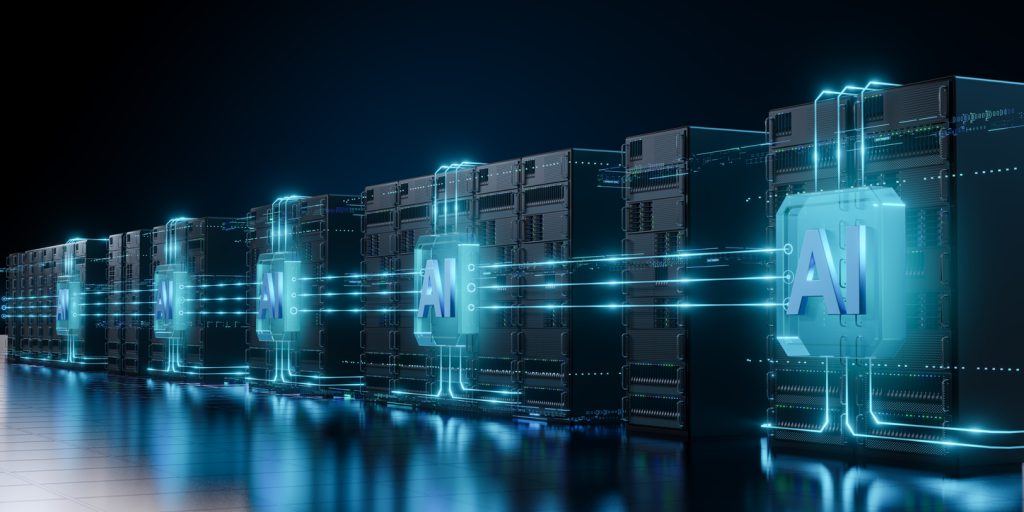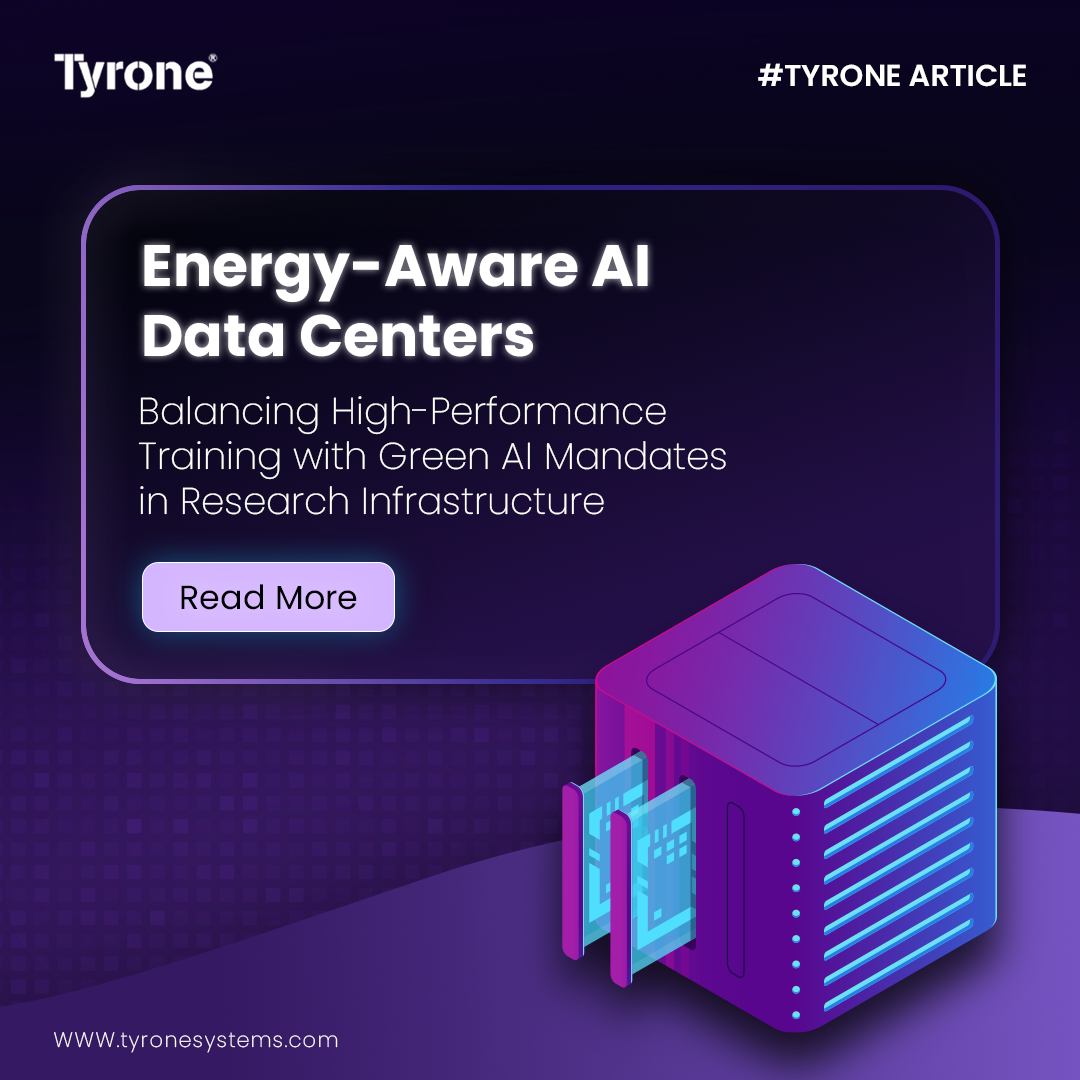Introduction
AI-driven research has accelerated dramatically, bringing with it a surge in demand for computation-intensive training workloads. But this rapid growth has created a dual reality: institutions must deliver high-performance computing to support advanced AI while simultaneously complying with strict green-AI guidelines and sustainability objectives. For research stakeholders, spanning academia, industry labs, and government-backed institutes, energy-aware AI data center design is now a strategic necessity, not an optional enhancement.
The Escalating Energy Footprint of AI Training
AI workloads have shifted from moderately intensive compute tasks to large-scale generative and foundation model training, dramatically increasing energy consumption. Research shows that:
- Generative AI models require 7–8× more energy than conventional data processing tasks (Source: MIT News).
- Global data center electricity consumption reached 460 TWh in 2022 and is projected to more than double as AI adoption accelerates (Source: MIT News).
- U.S. data centers already consume over 4% of national electricity, projected to hit 7–12% by 2028 under aggressive AI growth scenarios (Source: AAAI).
Training a frontier-scale model can consume more than 50 GWh of electricity, equivalent to the annual load of thousands of households (Source: Rishijeet Energy Requirements for AI Infrastructure).
These figures underline the urgency: without energy-aware strategies, AI research infrastructure becomes operationally expensive, environmentally damaging, and increasingly non-compliant with global sustainability mandates.
Why Energy-Aware AI Data Centers Are Now a Strategic Imperative
1. Regulatory Pressure and Compliance
Governments and research-granting bodies now require transparent reporting of energy usage, carbon intensity, and PUE (Power Usage Effectiveness). Non-compliance risks funding loss, reputational damage, and operational restrictions.
2. Direct Impact on Operating Budgets
Energy-efficient hardware, optimized cooling, and renewable energy adoption reduce recurring energy expenditures. For multi-megawatt research data centers, these savings can be substantial and recurring.
3. Sustainability as a Competitive Differentiator
Research institutions that adopt green AI practices gain a strategic edge when attracting grants, sustainability-focused investors, and high-caliber research talent.
4. Long-Term Infrastructure Stability
Reducing dependency on fossil fuels and power-intensive hardware mitigates risks around energy price volatility and future environmental taxation.

Core Design Principles for Energy-Aware AI Research Infrastructure
1. Hardware Efficiency and Workload Mapping
- Invest in accelerators with superior FLOPS-per-watt efficiency rather than raw performance alone.
- Allocate high-density GPU clusters exclusively to compute-heavy training; shift inference, analytics, and batch tasks to low-power CPU or edge clusters.
- Favor modular scaling to avoid idle capacity, which silently contributes to energy waste.
2. Carbon-Aware Scheduling
Modern AI clusters can be programmed to align workloads with low-carbon energy availability:
- Delay non-urgent model training to periods with high renewable energy input.
- Use grid carbon intensity APIs to automate job scheduling.
- Establish night-time or renewable-heavy “training windows” to reduce carbon intensity without impacting research timelines.
3. High-Efficiency Cooling and Power Delivery
Cooling remains one of the largest energy drains in AI data centers. High-density workloads demand:
- Liquid cooling systems for GPU clusters to lower PUE dramatically.
- Smart airflow engineering and free-air cooling in suitable climates.
- Power distribution upgrades to reduce transformer and UPS inefficiencies.
4. Lifecycle Carbon Accounting
Stakeholders must assess not just operational energy but total lifecycle impact:
- Include embodied carbon from manufacturing and shipping servers.
- Reduce frequent hardware refresh cycles unless efficiency gains justify replacement.
- Track CO₂ per GPU-hour and align procurement decisions with long-term sustainability targets.
5. Data-Centric and Model-Centric Efficiency Techniques
Research shows that reducing training dataset redundancy can cut compute energy usage by up to 90% without affecting accuracy (Source: arXiv).
Practical strategies include:
- Dataset deduplication
- Model pruning, distillation, and quantization
- Federated training to reduce centralized compute load and data movement
- Reusing pretrained models rather than training from scratch
These optimizations directly reduce energy consumption without compromising research output.
Implementation Roadmap for Research Stakeholders
1. Establish a Baseline Energy & Carbon Audit
Measure PUE, total cluster energy consumption, carbon intensity per workload, and diesel generator dependency. Without data, optimization is impossible.
2. Set Clear, Measurable KPIs
Examples include:
- PUE ≤ 1.3 for new clusters
- Renewable energy share ≥ 60%
- CO₂ emissions per training run reduced year-on-year
- Watt-hours per inference minimized through model tuning
3. Create a Cross-Functional Green AI Governance Board
Include experts from compute engineering, sustainability, faculty research, and finance. This ensures decisions balance academic goals with environmental compliance and operational constraints.
4. Invest in Renewables and Green Power Contracts
Long-term PPAs (Power Purchase Agreements) with solar/wind providers stabilize energy costs and reduce carbon intensity dramatically.
5. Pilot Innovation in Green AI Practices
Test emerging approaches such as:
- AI-driven cooling optimization
- Carbon-aware job orchestration
- Cluster-level power capping based on renewable availability
- On-chip real-time energy monitoring
These pilots create repeatable frameworks for large-scale adoption.
Challenges to Anticipate
- High upfront capital costs for renewable infrastructure and cooling upgrades
- Complex integration of carbon-aware scheduling with existing SLAs
- Gaps in carbon measurement for colocation and hybrid-cloud workloads
- Regulatory uncertainty in fast-evolving AI and sustainability policy landscapes
However, the long-term operational savings, funding leverage, and strategic resilience justify the investment.

Conclusion
Energy-aware AI data centers represent the next evolution of research infrastructure, where computational power and environmental responsibility are no longer contradictory. For stakeholders, the mandate is clear: advance AI innovation while minimizing carbon impact. By combining hardware efficiency, intelligent scheduling, renewable energy integration, and green AI practices, institutions can meet high-performance training needs without compromising sustainability.Green AI is not merely compliance, it is a decisive shift toward future-ready research ecosystems.












